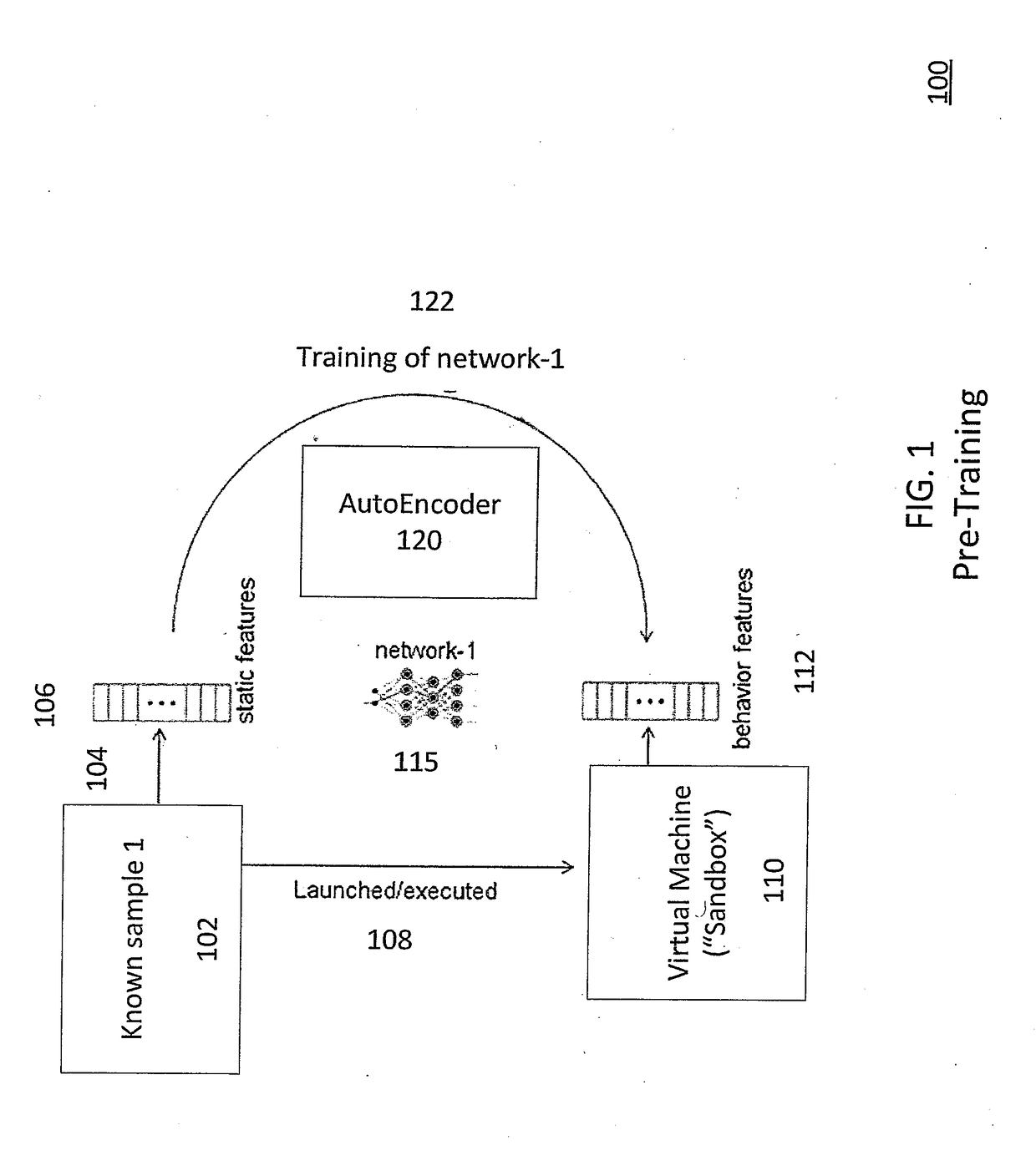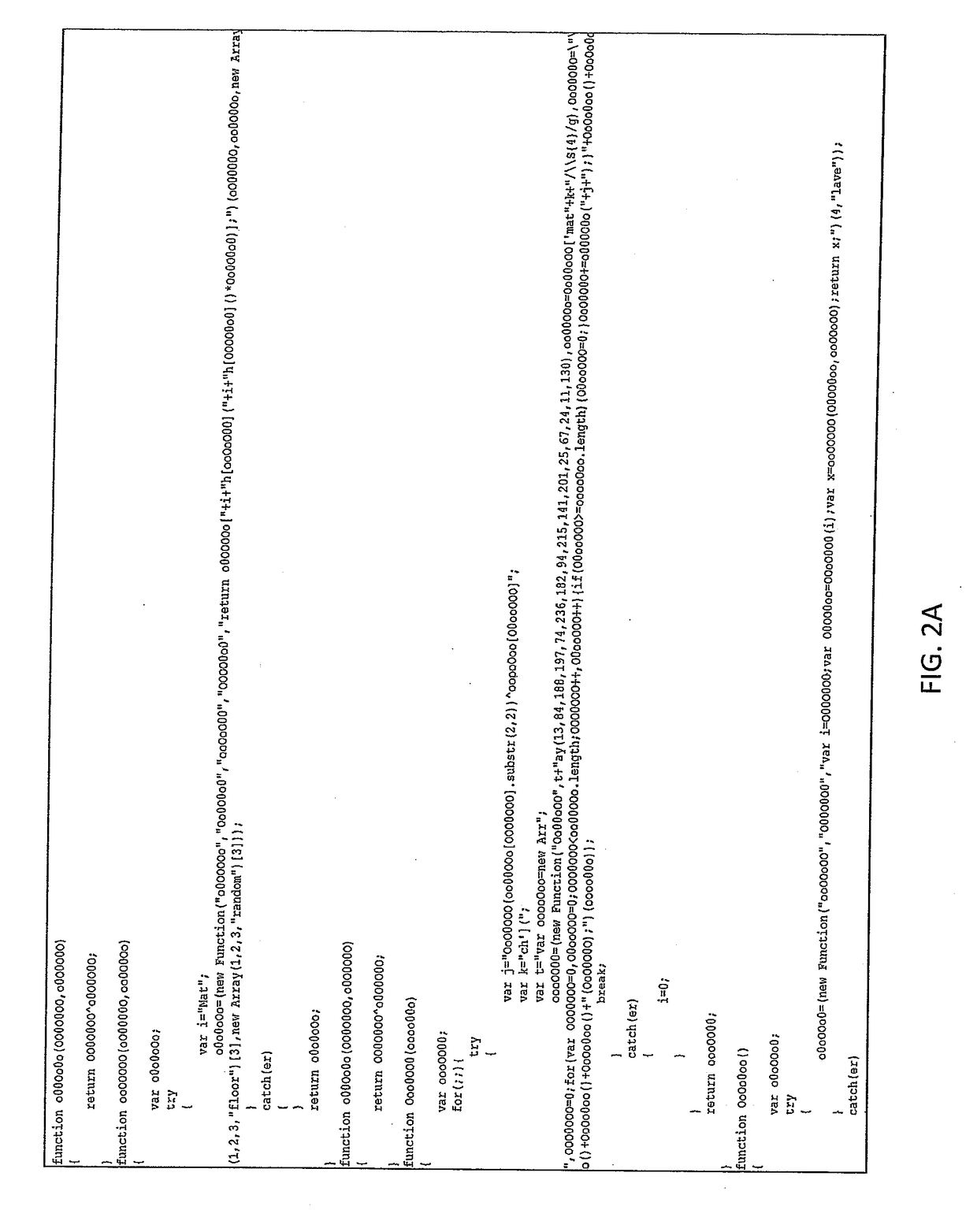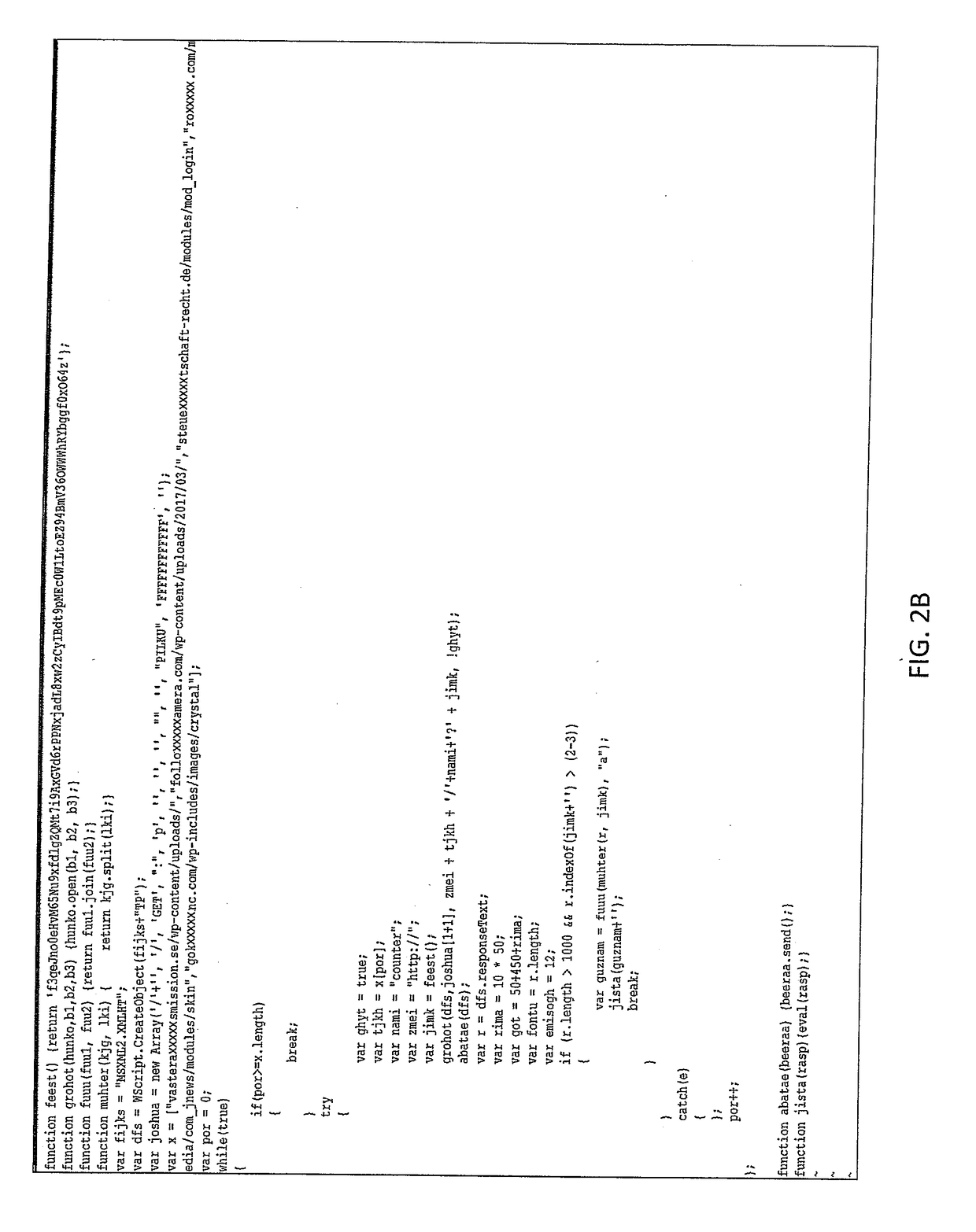Method and system for static behavior-predictive malware detection
a malware detection and static behavior technology, applied in the field of computer security, can solve the problems of high malware use, time-consuming, and high cost of executing a program sample in a sandbox to determine its behavior, and achieve the effect of improving the predictive performance of the network
- Summary
- Abstract
- Description
- Claims
- Application Information
AI Technical Summary
Benefits of technology
Problems solved by technology
Method used
Image
Examples
Embodiment Construction
[0014]Detecting malware using only static features or behavior logs are two general approaches that utilize machine learning in the security industry. Static features can detect malware in real time. However, a substantial proportion of recent malware avoids static detection using various tools or techniques. On the other hand, dynamic (behavioral) features can provide strong evidence of malicious behavior. However, the process of determining the dynamic features of a sample is generally costly in terms of resource and time. Furthermore, the determination of the dynamic features typically depends on the operating environment and may be circumvented by anti-sandbox techniques.
[0015]The present disclosure provides a method and system that uses a transfer learning model from behavior prediction to malware detection based on static features. Advantageously, the result is improved predictive performance for detecting both benign and malicious behavior while requiring only static analysis...
PUM
 Login to View More
Login to View More Abstract
Description
Claims
Application Information
 Login to View More
Login to View More - R&D
- Intellectual Property
- Life Sciences
- Materials
- Tech Scout
- Unparalleled Data Quality
- Higher Quality Content
- 60% Fewer Hallucinations
Browse by: Latest US Patents, China's latest patents, Technical Efficacy Thesaurus, Application Domain, Technology Topic, Popular Technical Reports.
© 2025 PatSnap. All rights reserved.Legal|Privacy policy|Modern Slavery Act Transparency Statement|Sitemap|About US| Contact US: help@patsnap.com



